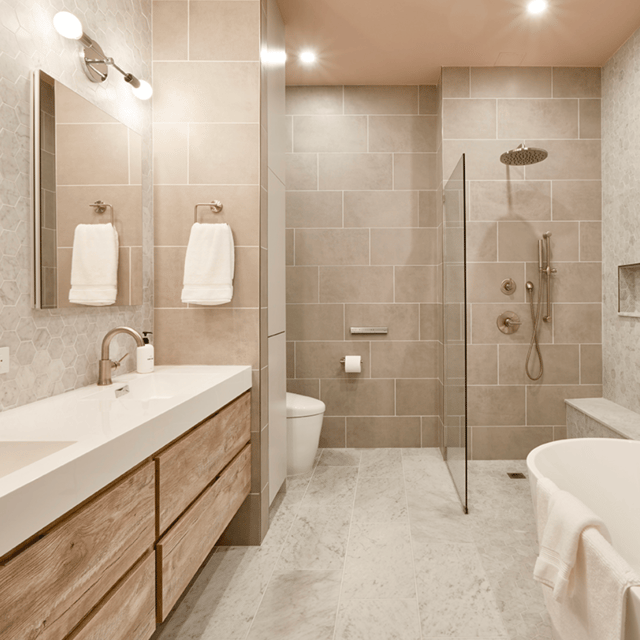
Bathroom
New York City Bathroom Remodels: Planning & Renovation Tips
12.05.2025

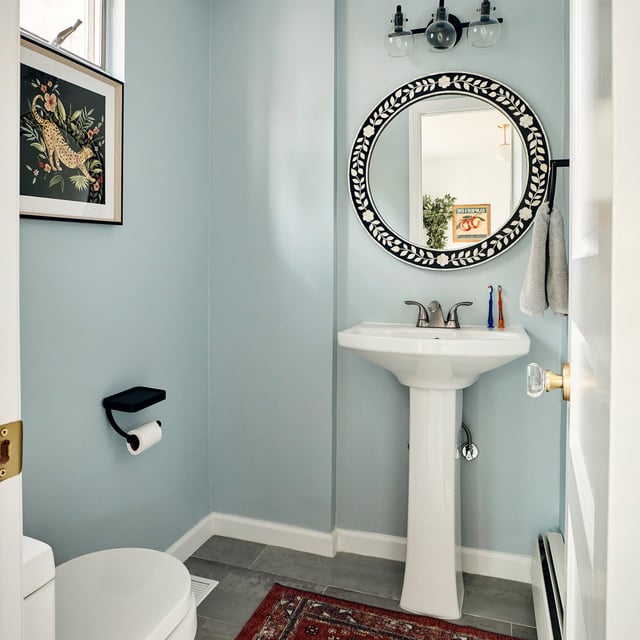
In This Article
Adding a half bath is one of the most practical ways to boost your home’s function and value. For most projects, the cost to add a half bath falls between $5,000 and $15,000—a broad range that makes sense once you factor in the variables. Every home is different, and costs depend on things like layout, existing plumbing, and the level of finish you’re aiming for. Here’s what really drives the numbers, and how to make cost-effective choices without cutting corners.
The price of adding a half bath isn’t just about a toilet and a sink. You’re paying for new plumbing runs (supply and waste), electrical work, framing, drywall, waterproofing, flooring, ventilation, and all the finish work. Labor is the biggest line item, especially if you’re adding a half bath in a spot that’s far from existing plumbing. If you’re working in a 1960s ranch with a basement below, you’ll have more flexibility (and lower costs) than if you’re trying to shoehorn a powder room into a Manhattan co-op with concrete slab floors. Material choices—tile, fixtures, lighting—can swing your budget by thousands, but the real cost drivers are almost always hidden behind the walls.
Your location will also play a large role in shaping the cost of your half bath construction. To dig deeper into how much to budget based on where you call home, read our guides for bathroom renovations in the Bay Area, Boston, Chicago, and New York City.
You’re more likely to find your half bath project budget toward the lower end of the spectrum if you’re able to employ the strategies below:
Know the Cost Before You Start

Arguably the most important factor in the success—and long-term value—of your half bath project is your choice of contractor. An experienced, detail-oriented professional will make sure materials are ordered accurately, coordinate skilled trades, and proactively address potential challenges before they become problems. While hiring a less qualified contractor might seem like a way to save money upfront, poor workmanship or missed details can lead to expensive repairs and headaches down the line. Potential problems can include:
Turn your renovation vision into reality
Get matched with trusted contractors and start your renovation today!
Find a Contractor
Adding a half bath is a smart, high-impact upgrade that can make everyday life easier while increasing your home’s value. Understanding what to expect at each stage helps you plan with confidence and steer clear of unwanted surprises.
The process starts with a thorough evaluation of your home’s layout and infrastructure. A designer or contractor will help you identify the best location for your new half bath, taking into account plumbing access, ventilation, and code requirements. Together, you’ll develop a layout that maximizes space and meets your needs, followed by selecting fixtures, finishes, and lighting.
Most municipalities require a permit for adding a half bath, even if you’re working within your home’s existing footprint. Your contractor will submit plans to the local building department and coordinate any necessary inspections. Permitting ensures your project meets safety, plumbing, and electrical codes—protecting your investment and making future resale smoother. Expect this step to add some time to your project, but it’s essential for a safe and compliant renovation.
Once permits are secured, construction begins. This typically involves framing, running new plumbing and electrical lines, installing ventilation, and building out walls and floors. After rough-ins are inspected, your team will install fixtures, tile, and finishes. Good contractors will keep you updated on progress and address any unexpected issues quickly.
After construction wraps up, a final inspection by your local building department ensures everything is up to code. Your contractor will walk you through the finished space, confirm that all systems are working properly, and address any final touch-ups.
From design to final inspection, adding a half bath usually takes several weeks, depending on permitting, material lead times, and the complexity of the work. Clear communication with your contractor helps keep the project on track and minimizes disruptions to your daily routine.
Renovate with confidence every step of the way
Step 1: Personalize Your Renovation Plan
Step 2: Receive Quotes from Trusted Contractors
Step 3: Let Us Handle the Project Details

Adding a half bath is a smart investment, but it’s also a project that benefits from expert planning and skilled execution. At Block Renovation, we connect you with experienced designers and thoroughly vetted contractors who understand the ins and outs of bathroom additions. From initial design and budgeting to permits, construction, and final walkthrough, our team is with you every step of the way. With Block, you get clear communication, transparent pricing, and the peace of mind that comes from working with professionals who put your needs first. Ready to get started? Reach out to Block Renovation and take the first step toward a more functional, comfortable home.

Written by Block Renovation
What is the minimum size of a half bath?
The minimum size for a half bath is typically around 3 feet by 5 feet (15 square feet), which allows enough space for a toilet and a small sink while meeting most building codes. However, local requirements may vary, so it’s important to check with your municipality or consult your contractor to ensure compliance.
Is a powder room the same thing as a half bath?
Will adding a half bath impact my property value and taxes?
Is it easy to add a shower to a half bath at a later time?
Converting a half bath to a full bath by adding a shower is possible, but it’s not always straightforward. You’ll need to ensure there’s enough space to meet code requirements for a shower, and you may need to upgrade plumbing, waterproofing, and ventilation. Planning for these possibilities during your initial remodel—such as leaving room for future expansion or roughing in plumbing—can make a future upgrade easier and more cost-effective. For more guidance, read our guides to Converting a Half Bathroom Into a Full Bathroom and Shower Remodel Ideas & FAQ.
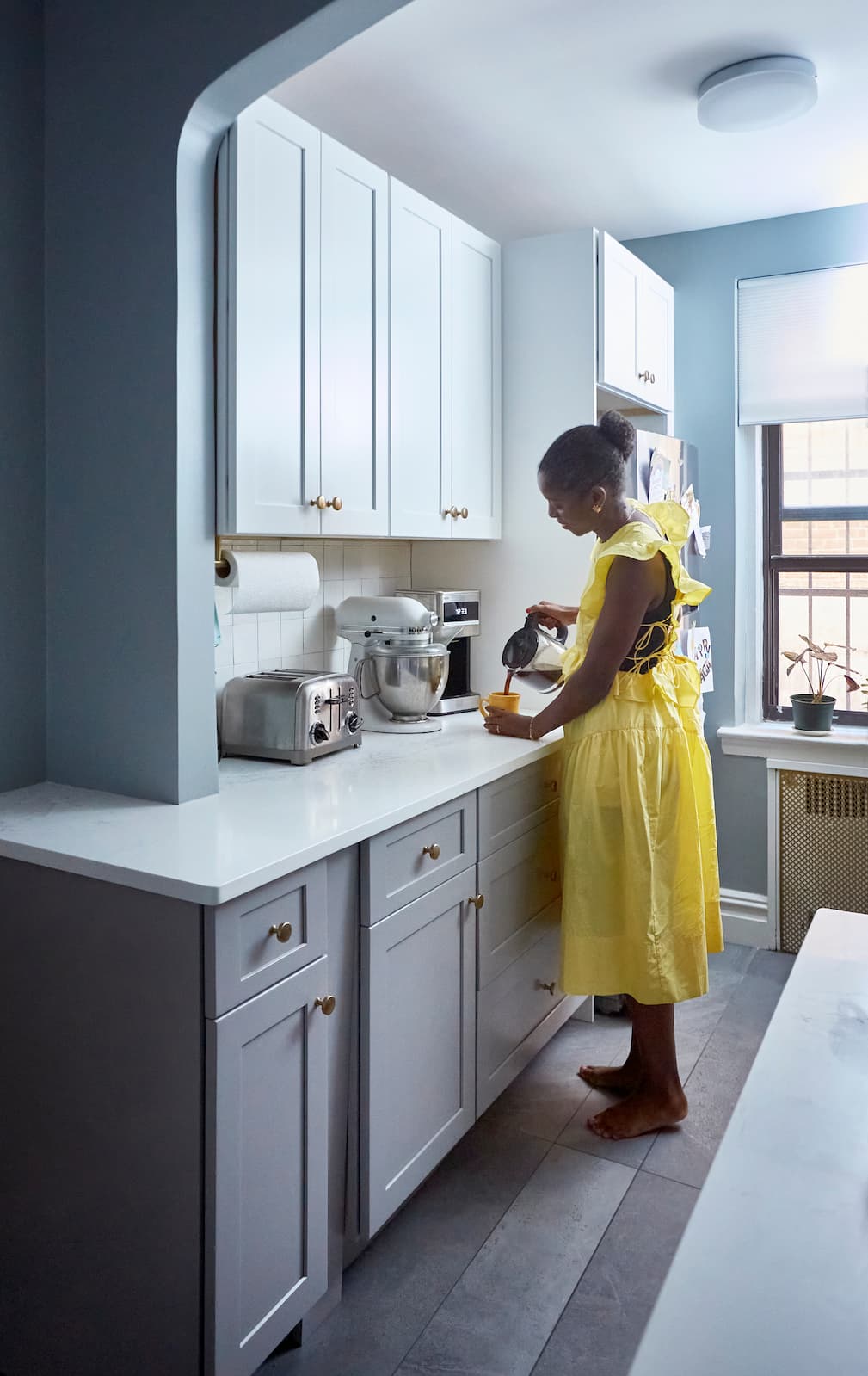
Renovate confidently with Block
Easily compare quotes from top quality contractors, and get peace of mind with warranty & price protections.
Thousands of homeowners have renovated with Block

4.5 Stars (100+)

4.7 Stars (100+)

4.5 Stars (75+)

Bathroom
New York City Bathroom Remodels: Planning & Renovation Tips
12.05.2025

Bathroom
Slanted Roof Bathrooms and Shower Design Ideas
11.22.2025

Bathroom
Choosing Bathroom Fixture Finishes - Inspiration & FAQ
10.22.2025
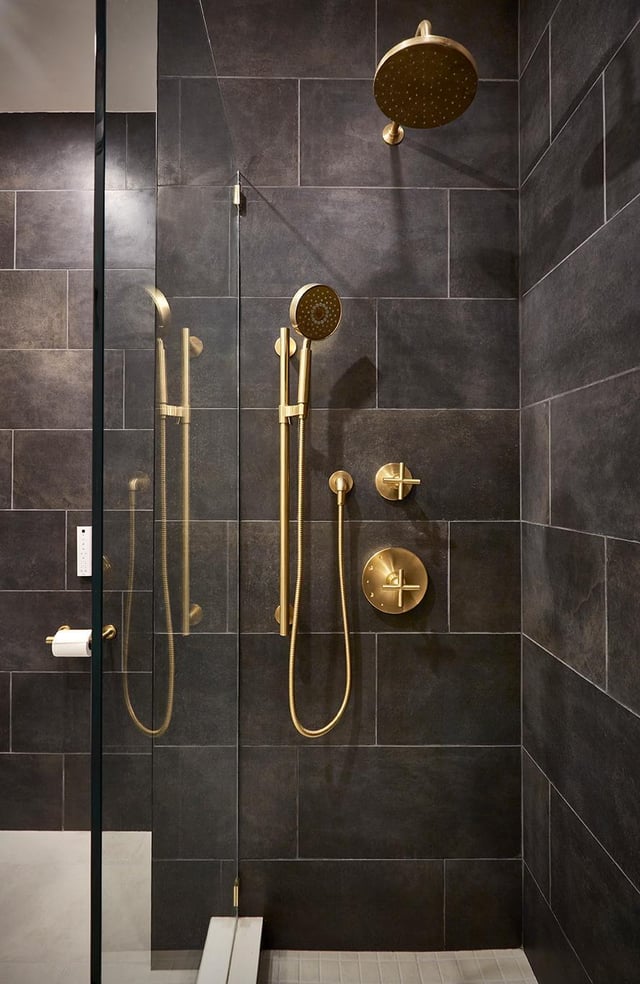
Bathroom
Designing a 40-Square Foot Bathroom? Here’s What Actually Matters
10.22.2025
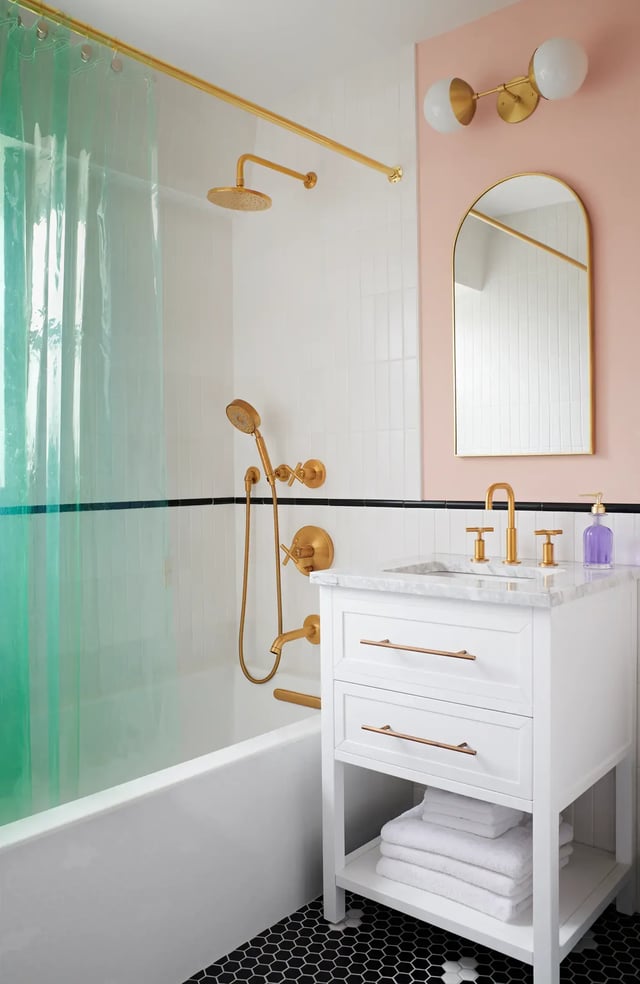
Bathroom
Different Types of Bathroom Sinks
10.22.2025
Renovate confidently